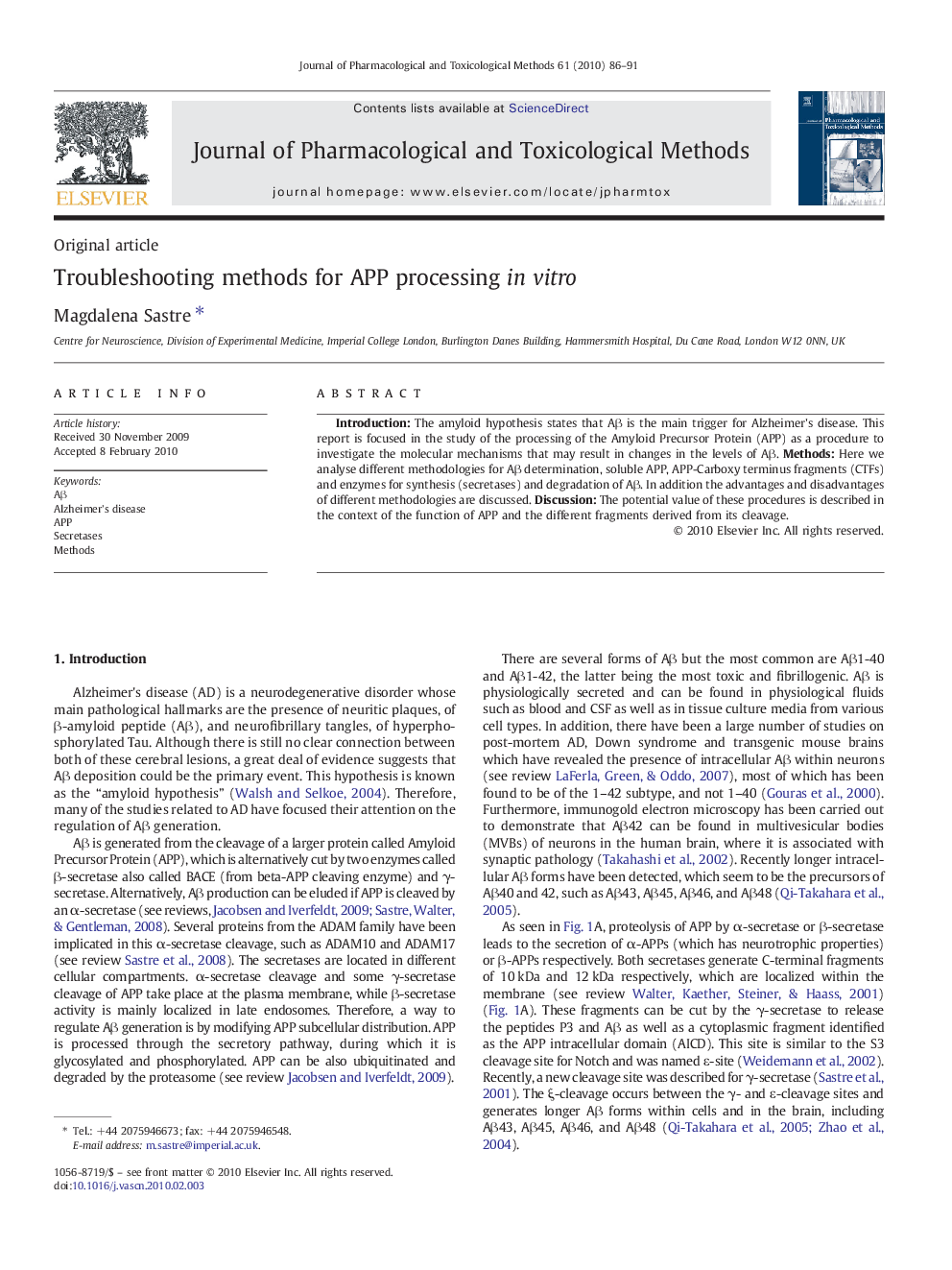| Article ID | Journal | Published Year | Pages | File Type |
|---|---|---|---|---|
| 2549333 | Journal of Pharmacological and Toxicological Methods | 2010 | 6 Pages |
Abstract
IntroductionThe amyloid hypothesis states that Aβ is the main trigger for Alzheimer's disease. This report is focused in the study of the processing of the Amyloid Precursor Protein (APP) as a procedure to investigate the molecular mechanisms that may result in changes in the levels of Aβ.MethodsHere we analyse different methodologies for Aβ determination, soluble APP, APP-Carboxy terminus fragments (CTFs) and enzymes for synthesis (secretases) and degradation of Aβ. In addition the advantages and disadvantages of different methodologies are discussed.DiscussionThe potential value of these procedures is described in the context of the function of APP and the different fragments derived from its cleavage.
Related Topics
Health Sciences
Pharmacology, Toxicology and Pharmaceutical Science
Pharmacology
Authors
Magdalena Sastre,
